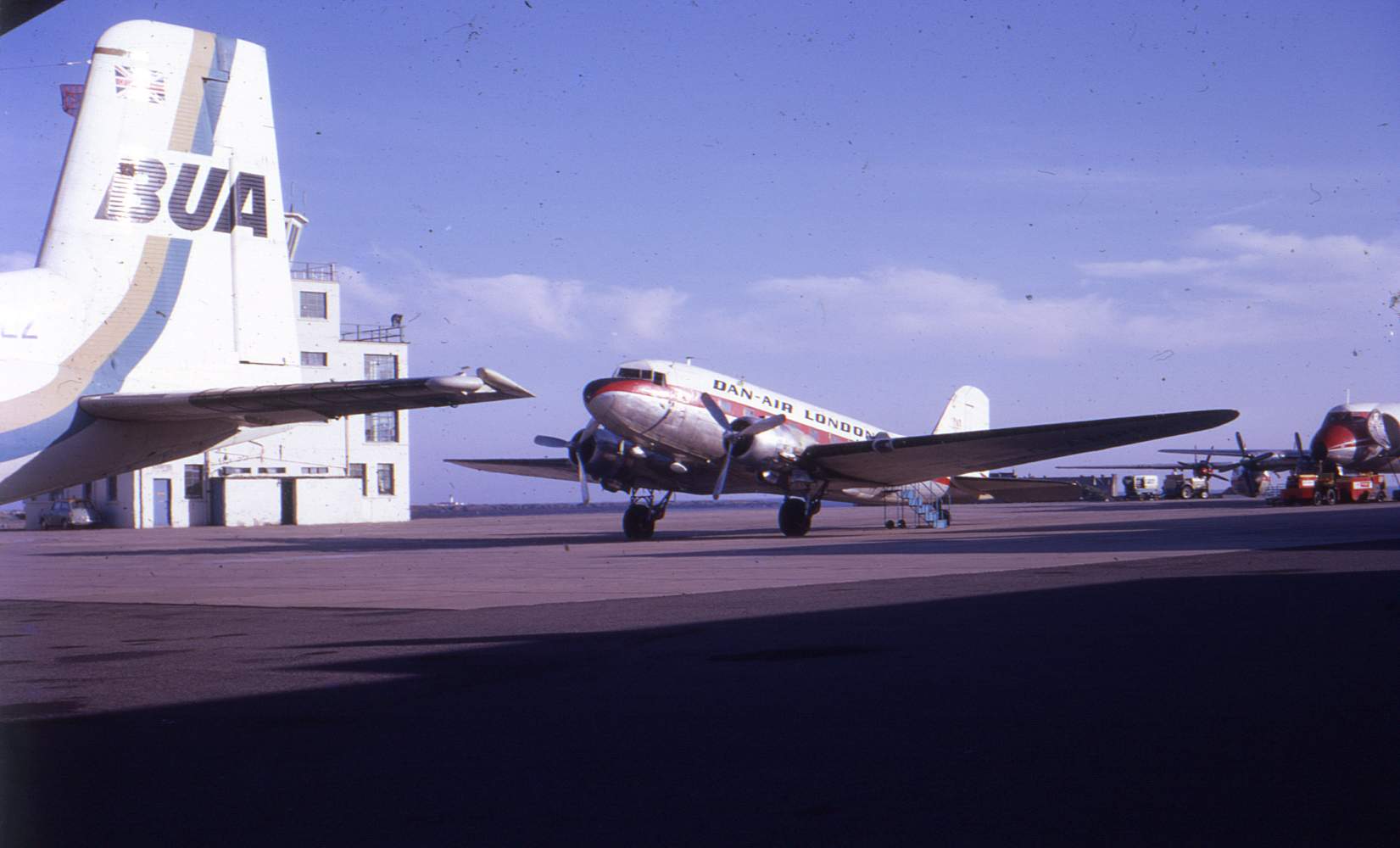296 and 297 Squadron Operations 1944 to 1946
Earls Colne airfield remained untenanted for several weeks until the arrival of bombers from 38 Group RAF after the Market Garden operation. Two squadrons arrived at the Essex airfield from Brize Norton, Oxfordshire, on 29th and 30th September 1944 and spent much of October 1st complaining about the state that the airfield had been left in. The new arrivals didn’t like the way that the Squadron HQ and Flight Commander’s offices were in a hut and the Daily Record comments that the dispersed nature of the billets would require a lot of bicycles!
HISTORY OF 296 & 297 SQUADRON
The two squadrons which arrived, 296 and 297, had very similar histories – as well as the consecutive numbers. Originally formed in December 1941 as a ‘glider exercise squadron’ , 297 was given its numeric designation on 22nd January 1942 while 296 was formed at Ringway on 25th January 1942. After training with the ‘Three Aitches’ – Harts, Hectors and the Hotspur glider – both squadrons employed Armstrong Whitworth Whitley Vs on early training flights and, from October 1942, ‘nickelling’ (leaflet dropping) exercises.
296 Squadron began to switch to the Armstrong Whitworth Albemarle between February and April 1943. Pamphlet-dropping continued but actual bombing raids also commenced during April (17) with 297 Squadron Whitleys. However, the function of both squadrons was to assist with airborne operations and, in June 1943, with the invasion of Sicily imminent, 296 Squadron traveled to Froha in Algeria. The Squadron participated, not very successfully, in Operation Ladbroke and Operation Husky while 297 Squadron remained in Britain and, from February 1944, commenced drops to Resistance groups in Europe. Both squadrons played an initial key role in Operation Overlord when they dropped the Pathfinder groups as a precursor to Operation Tonga. They followed this up with a second phase dropping paratroops of the 5th Parachute Brigade. During this phase, one Flight Lt. Scott distinguished himself by making four runs over the drop zone, partly owing to the reluctance of a Para Dog to jump. After hiding in the gunners turret, the less-than-eager pooch finally barked ‘Geronimo’ and headed landwards en route to a Normandy field.
The Albemarles were too cramped for efficient paratroop operations but they certainly worked hard during Overlord: they took place in the first two phases and then towed Horsa gliders on the third phase delivering men of the 5th Para Brigade, Royal Engineers and heavy construction equipment. Later, three aircraft transported further reinforcements for the 9th Paratroop Brigade before, on the night of June 6th, both squadrons towed gliders loaded with the 6th Air Landing Brigade to Ranville on Operation Mallard.
On the night of June 7th/ 8th, the Albemarles delivered SAS troops on a clandestine mission (18). Indeed, SAS support continued into August 1944 along with container drops to SOE operatives, mostly around Le Mans in NW France. Interestingly, as many as a dozen Albemarles might be deployed on SOE flights on a suitable moonlight night.
The two squadrons were also involved in Market Garden in September 1944, moving their Albemarles to Manston on 6th of the month in order to reduce the range to the landing zones. After considerable waiting around, twenty Albemarles of 296 towed Horsas and seven towed Wacos to Holland on Sept 17th (19). Accompanying them were 28 aircraft from 297 Squadron towing Horsas plus two with Wacos. The following day, the squadrons towed respectively 21 and 24 gliders to Holland, both days without loss.
(17) From RAF Operations Record Book for 297 Squadron.
(18) Information from RAF records, https://raf38group.org and www.pegasusarchive.org.
(19) These figures, from RAF records, are based on the release of 3 Wacos at LZ ‘N’, 4 at LZ ‘Z’, 4 Horsas at LZ ‘S’ , 16 at LZ ‘Z’.
At the end of Operation Market Garden, the Albemarles returned to Brize Norton on September 19th, dedicated to secret missions. 296 Squadron’s CO, Wing Commander T. ‘Musty’ Musgrave, had attempted a reconnaissance of Earls Colne on September 14th while the Squadron was standing-by at Manston. However, an obstinate patch of cloud precluded any useful assessment.
When they moved to Earls Colne at the end of September, 296 were still flying Albemarle Mk I, II, V and VI aircraft but were the last squadrons operating the transport. Their conversion to Halifax Vs would begin in October as, initially, the squadrons had only one Halifax and, strangely, some crews had already done conversion courses on Short Stirlings! The switch to the Halifax proved to be a drawn-out affair. Additionally, Earls Colne hosted a couple of Airspeed Oxfords operated by 38 Group as communications aircraft. The Oxford was not a stranger at Earls Colne as the RAF had ‘lent’ some to the Ninth Air Force as squadron ‘hacks’ and the USAAF had named a dispersal corner ‘Oxford Circus’ and erected a suitably artistic name board!
On September 29th, the first 11 gliders were moved from Brize Norton by 296 Squadron Albemarle tugs. The following day, 296 completed the move with 23 aircraft towing gliders to their new home. The first week of October was largely spent ferrying gliders from airfields at Ramsbury and Aldermaston to 46 Group Dakota squadron airfields at Broadwell, Blakehill Farm and Down Ampney. On October 7th, 296 had their first attempt at towing a glider with a Halifax from Earls Colne. On October 11th, the RAF Operation Record Book noted that two dual control Halifaxes had been used extensively to convert crews trained on the Stirling to the Halifax: ‘Earls Colne was treated to the spectacle of a squadron doing circuits and bumps with variations. Maybe it is a good thing that a record of the number of ‘bumps’ has not been kept’. Circuit training continued for much of the rest of October in the Halifaxes along with some cross-country training while the Albemarle crews carried-out local map-reading exercises. During the autumn, the Albemarles gradually began to depart to conversion/ training units at Keevil and Peplow as the number of Halifaxes on squadron-strength increased. On October 18th, a 297 Squadron Halifax flew to Lissett for training. Another Halifax had swung on landing at the East Yorkshire airfield and was partially obstructing the runway. The 297 Squadron Halifax was eventually told to ‘land short’ which, unfortunately, it didn’t fully achieve and ran into the first damaged aircraft!
Dusk and dark landing training with the Halifaxes commenced at Earls Colne in early November with glider-towing practiced over both long and short routes. A mass glider take-off exercise on November 30th saw 20 aircraft and gliders taking-off in a 45 minute period from one of Earls Colne’s shorter runways. The logs note that ‘tugs were not always airborne when the perimeter at the downward end of the runway was reached’ – presumably, runway 12/ 30. Training was not without its hazards and, on November 29th, one of 297’s Halifax Vs crashed at Shepherds Grove airfield in Suffolk following cross-country flying. Two crew and one passenger were killed and the pilot and engineer received severe injuries from which the latter died on December 1st.
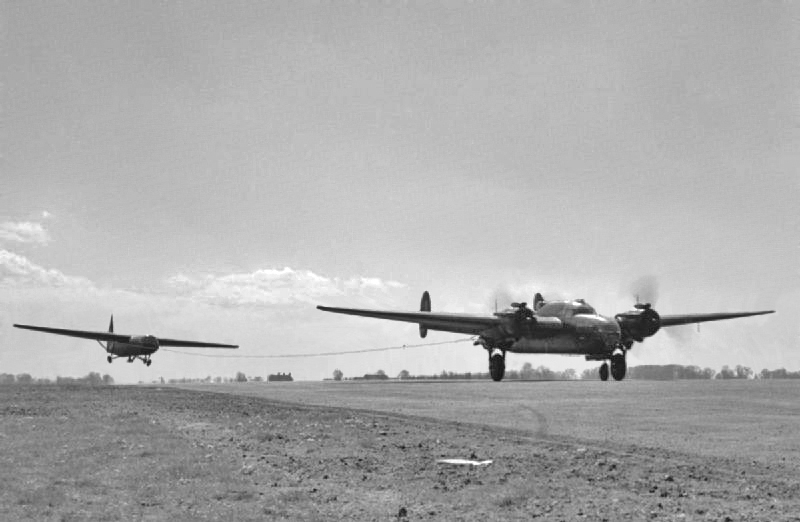
Essex weather in mid-November bogged-down vehicles and aircraft alike and, by December, the glider training was frequently being curtailed by meteorology. The last of the Albemarles departed on December 4th and the Halifaxes continued to operate mass glider exercises and air/ sea firing tests at the Orfordness Range. The newly-supplied four-engined bombers at Earls Colne were given a broader remit than the Albemarles had enjoyed at Brize Norton. The power provided by the four Merlins of the Mk Vs meant that it was possible to double-tow a pair of Horsas or tow the larger Hamilcar glider. A lot of effort went into adapting the Halifax bomb bays to carry jeeps and the new aircraft could also accommodate more troops, passengers and freight than the cramped Albemarle. The Halifax’s greater range meant that it was suitable for SOE and passenger flights as far asNorway and also for medium-duration air-sea rescue missions. Furthermore, the Halifaxes retained their design role, that of a heavy bomber, and 296/ 297 were occasionally called upon to bomb targets in Germany. On December 4th, one Halifax carried-out an SOE flight to Nieuwkoop in Holland. Two further 297 Squadron Halifaxes carried-out an SOE drop in Holland on Dec 17th. Two days later, Northern Essex was submerged under a raft of fog which was convenient for minimal work schedules over Christmas.
A novel sight for Earls Colne was provided on Dec 28th when a 296 Sqdn Halifax towed aloft one of the huge Hamilcar gliders. Three of the big tank-carrying gliders were in action again on Dec 30th, towed by 297 Squadron Halifaxes, and a further two were towed aloft by 296 Squadron on December 31st as training for Operation Varsity continued. The Earls Colne squadrons also flew some air sea rescue missions at the end of December with up to seven Halifaxes pursuing ten hour flights over the North Sea.
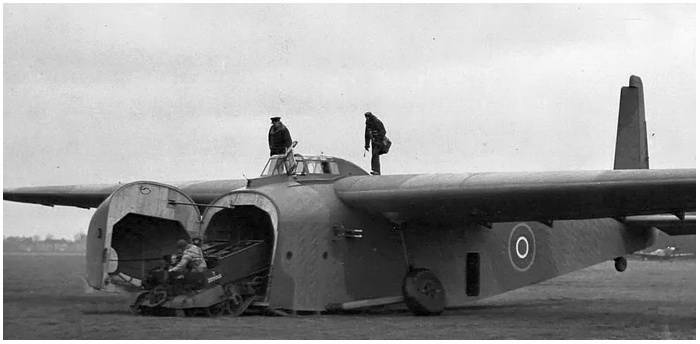
1945
Snow came to North-East Essex at the start of 1945 and Earls Colne was smothered in a cloak of white. On Jan 2nd a 296 Squadron headed to Holland to drop supplies to the SOE. The logs record that there was ‘no reception’ – a situation which could have reflected all kinds of problems for the Resistance fighters waiting on the ground. The next day the weather permitted a combined exercise with fighter squadrons. For 296 Squadron, the day was marred by the crash of Halifax LL355 at Bury St.Edmunds with one fatality, the Bomb Aimer, Flt.Sgt F.C.James. The airfield was closed on the afternoon of January 5th when, in a reminder of earlier years, a B-17 Fortress landed downwind and became bogged-down in the run-off area. 296 Squadron flew Air Sea Rescue missions on 6th and 7th January with three aircraft deployed on the first day and six Halifaxes flying six-hour missions on the second day. A further operation to Holland on behalf of the SOE was flown on the night of 6th/ 7th but a bombing practice on January 10th was canceled owing to deep snow. Further Hamilcar and Horsa towing practice took place on 14th and 15th and Squadron Leader Jamieson made 296’s maiden flight in the Squadron’s first radial engined Halifax III on 17th January 1945. The next day the thaw set in although ground crews still had to put-up with mist and freezing rain. The two squadrons dispatched five Halifaxes each on a bombing raid to the Ruhr on the night of Jan 20th/ 21st demonstrating the varied nature of their operations. The ten aircraft were tasked with bombing the railway junction at Weyberg and used ‘Gee’ radionavigation to bomb through 10/10 cloud cover. One 296 Squadron aircraft was battle-damaged and made an emergency landing at Lille on the return flight. There was a further loss of a Halifax on Jan 28th when 296 Squadron’s Flt.Lt Scott crashed near Ipswich, fortunately without serious injuries.
SOE and SAS clandestine flights were operated by 297 Halifaxes on Feb 1st but bad weather compromised the mission. The flight was repeated the next night and the SAS drop made successfully. The aircraft making the SOE drop identified the village and saw lights but they were extinguished early, possibly for very good reasons. Feb 2nd also saw five 297 Halifaxes taking-off for a night tactical bombing raid on Grevenbroich. The mission didn’t go well with one Halifax crashing just after take-off, some two miles from Earls Colne airfield. Of the remaining four which reached the target, two aircraft suffered problems with the ‘Gee’ radio navigation but two reported successfully hitting the target. The navigator who had been on the crashed Halifax died and the tail gunner was seriously injured but the pilot escaped from the burning aircraft and bravely returned several times to assist the escape of other crew members despite the full bomb load on board. 296 Squadron had also taken part in the raid and four out of their seven bombers reported success.

In a foretaste of 296’s post-war operations, a Halifax was dispatched on a transport mission to Rome on Feb 2nd and one left Earls Colne for Le Bourget, Paris. Three of 296’s now-surplus Halifax Vs were ferried to Hooton Park on the Wirral on Feb 3rd. Further practice with ‘Gee’ navigation followed the mixed performance during the raid on Feb 2nd. and, on 7th, another tactical bombing raid was mounted. Upon the return from Le Bourget of 296’s Squadron Leader Hobbs, he and the experienced Sqn Leader Jamieson led eleven 296 Squadron aircraft to Calcar, NW of the Ruhr. 297 Sqdn provided nine aircraft for the mission which was to bomb the target from an altitude of 7000′ using ‘Gee’ navigation. Two of the 296 Halifaxes had problems en route to the target with F.O Wood having to make a forced landing in France. Sqn Leader Hobbs reported control problems with his Mk V LL384 since take-off and, when a port engine started misbehaving near Lille, he was unable to feather the airscrew. With a forced landing imminent, bombs were jettisoned in a (hopefully) safe location near Lille. The stricken bomber clipped the spire of a local church and ‘sailed’ down an avenue of poplar trees before striking overhead power cables and hitting the ground. The Halifax caught fire and, although all the aircrew escaped, all were burned, the bomb aimer and navigator seriously. Nine of the 296 aircraft and all 297 Halifaxes reported a successful bombing run.
Mk III Halifaxes continued to arrive during the month, although it was Halifax Vs which were sent on the next bombing mission on Feb 13th. Eight 296 Sqdn bombers accompanied six aircraft from 297 to bomb the town of Rees on the east bank of the Rhine close to the scheduled Operation Varsity location. Guided to the target again by ‘Gee’ , all aircraft reported a successful operation despite extensive searchlight cover and some unidentified night fighter activity. The approach of the Rhine offensive also prompted extensive glider-tow training on 14th and 20th February when better weather prevailed.

SOE operations also returned on Feb 20th and, this time, the range of the Halifaxes was to be tested with operations in Norway for both squadrons. Prior to these missions, the Deputy Supreme Commander of the Allied Expeditionary Force, Air Chief Marshall Sir Arthur Tedder, attended the briefing at Earls Colne. Five 296 Sqdn aircraft departed for rendezvous points mostly in the southern mountains of Norway: one didn’t reach the target, two reported ‘no reception’ and two reported success. 297 Squadron sent four Halifaxes to Norway, each carrying thirteen containers and three packages. Three aircraft reported the acknowledgement of successful reception. The operation was repeated on 23rd February with six 296 aircraft outbound, five finding their reception party successfully. 297 reported one success at ‘Stirrup 14’ near Vinje, two successes at ‘Stirrup 10’ and one success at ‘Stirrup 7’. Three aircraft with primary targets of ‘Stirrup14’, ‘Stirrup 7’ and ‘Stirrup 8’ delivered their loads of 13 containers to the secondary location, ‘Vet 3’, in Fyresdal. The bombers returned via a fuel stop at Lossiemouth on the Moray Firth, landing eight hours after departing Essex.
Exercises by both squadrons on Feb 25th centred on local flying with jeeps carried in the Halifax bomb bays. On the night of 25th, six aircraft were dispatched by each squadron on SOE missions. This time, 296 reported successful reception at four of the six sites while 297 had three successes. Of the ‘no reception’ missions, 297’s Halifax III NA635 flown by Wing Commander Dean thought that identification lights were flashed just as the first pass was completed, but had disappeared by the subsequent run. NA640 had even less luck: the Halifax III was struck by flak in the turret area when north of Arendal, the port undercarriage descended and wouldn’t retract. Flt Lt. Pitt successfully nursed the Handley Page back to Dyce. Others returning from the mission landed at Boreham, Woodbridge, Langham and Rivenhall.
The end of the month had two further successes for 296 Squadron: on 27th, the Commanding Officer, Wing Commander T.Musgrave, took a Halifax III on the four hour round-trip to drop an SOE agent near Rotterdam and, on 28th, a Jeep was successfully dropped from a Halifax over Great Sampford. The SOE mission was not, however, without incident. In order to divert attention from the agent drop, the Halifax was to drop twelve 500lb bombs on a bridge in Holland. When approaching the target, the DRC (Dead Reckoning Computer?) ‘toppled’ then righted itself – whatever the DRC is, the result was that the Halifax flew through Rotterdam at 50′ above the River Maas, at a level slightly below the derricks on the wharf side.
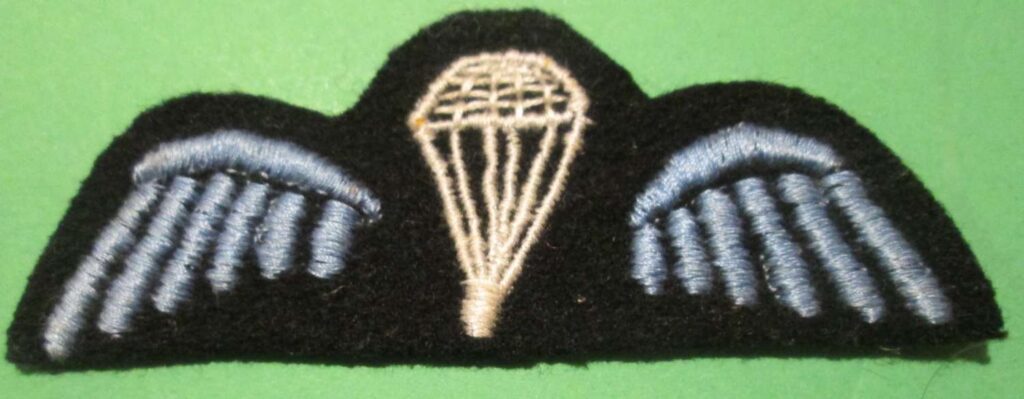
March 1945 was the month of the last great airborne operation of WW2- Varsity, the Rhine Crossing. The denizens of Earls Colne must have had few doubts that something big was imminent in view of the level of glider training from the airfield. On March 1st and 2nd, Halifaxes of both squadrons towed Horsas and Hamilcars aloft: the Horsas were released over the vacant airfield at Great Sampford near Saffron Walden while the lumbering Hamilcars were cast-off to land within the boundaries of Earls Colne airfield. There were some incidents during the towing practice, especially where double-tow lifts were attempted and, for the further excitement of local observers, Halifaxes practiced dropping jeeps and containers. Householders in Curds Road and Coggeshall Rd would also have heard Halifaxes rumbling aloft on many nights, operating flights to support SOE and Resistance groups across Europe. On the night of March 2nd, 296 and 297 squadrons each operated five aircraft on SOE operations to Norway dropping containers at the ‘Stirrup 10’ preliminary and ‘Stirrup 2’ alternative target in the wilds of southern Norway. 297 Squadron also sent one Halifax to an SOE rendezvous between Leiden and Utrecht in Holland.
Both squadrons sent three aircraft on an Air Sea Rescue mission across the North Sea on March 3rd and, tragically, one of the 297 Squadron Halifaxes was, itself, lost at sea. The aircraft were patrolling at only 200′ above the waves when Warrant Officer Richardson-Jones Halifax was seen to disappear into low cloud and not reappear. It seemed likely that the aircraft had flown directly into the North Sea.

During the early part of March, the disposal of Halifax Vs to Hooton Park continued but the varied demands of operations and training meant that both squadrons had to call a halt to all non-essential operations on March 4th. One other change occurred on March 6th, when it was decided that 296 Squadron would not be towing the large Hamilcar gliders from Earls Colne on the Varsity operation. Glider training recommenced on March 5th and there were exercises on most days. These ranged from station-based exercises to cross-country flights. On March 7th, the latter included twelve Halifax/ glider pairs from each squadron. One glider experienced problems during turbulence on take-off and had to cast-loose. It must have gained a reasonable altitude as it made it to RAF Hethel in Norfolk, some 65 miles from Earls Colne. On March 9th, 296 sent five Halifaxes to drop paratroops over Great Sampford airfield. 297 continued with glider towing practice – which was complicated when one of the Halifaxes burst a tyre on landing and was stranded at the intersection of runways 01/ 19 and 12/ 30.
296 Squadron logs record that, on March 13th 1945, radar equipment was successfully dropped by Halifax MZ965 to a Resistance movement ‘in Germany’ although the quoted coordinates suggest that it was more likely just across the border into Denmark, just north of Flensburg. On the same night, 297 Squadron Halifax NA117 took 22 containers and six panniers to a position near the Ardennes in Belgium, somewhere which should have been back under allied control since the ‘Battle of the Bulge’.
10th – 12th March saw more Earls Colne-based glider towing exercises and paratroop dropping at Great Sampford culminating in a mass glider-towing exercise on March 14th. Thirty-five Halifaxes from the two squadrons towed Horsa gliders with the intention of releasing them over Earls Colne. However, haze had set-in dramatically reducing visibility and the gliders were eventually cast-off at Keevil, Wiltshire, before the tug aircraft landed at Harwell, Oxfordshire. To compound this logistics shocker, a 297 Squadron navigator acting as ‘pilot’s mate’ during landing at Harwell retracted the undercarriage rather than the flaps. Most of March 15th was spent recovering gliders to Earls Colne to permit further training from 17th to 21st.
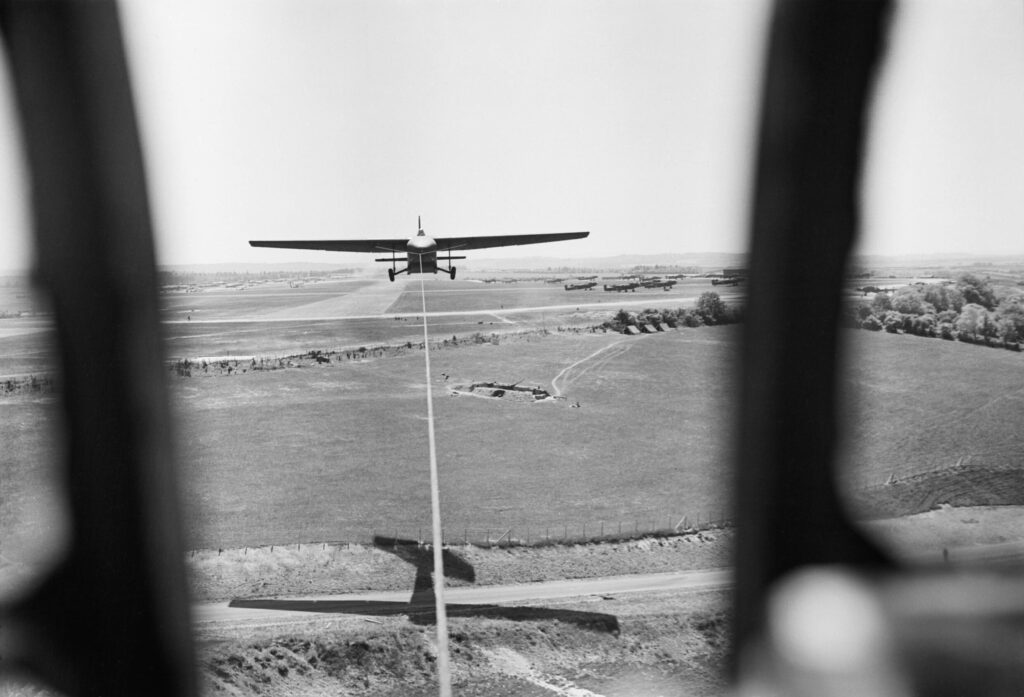
OPERATION VARSITY, THE RHINE CROSSING: MARCH 1945
Extensive air testing took place on 21st and 22nd of March in preparation for Operation Varsity. On March 17th, the Squadron CO, Wing Commander Musgrave, and Flt.Lt.Jackson had each piloted a Halifax towing a Horsa glider along the route planned for Varsity. This was given the name ‘Operation Token’ and went successfully.
46 Group squadrons positioned their Dakotas to the neighbouring airfields of Birch (233 Sqdn, 48 Sqdn and 427 Sqdn RCAF) and Gosfield (271 Sqdn, 512 Sqdn and 575 Sqdn) . 38 Group added Woodbridge to their Earls Colne Halifax base and their East Anglian Stirling bases at Rivenhall, Great Dunmow and Shepherds Grove. Woodbridge, with its long runway, hosted 298 Sqdn and 644 Sqdn Halifaxes which would tow the Hamilcars originally scheduled for Earls Colne. Marshalling of the gliders at Earls Colne began on 21st March with 296 Sqdn lining-up Horsas along runway 12/30. By 23rd, 60 aircraft and glider combinations had been positioned with 50% pre-hitched on either side of the runway, taking up one third of its length. The remaining tugs and Horsas were assembled on the perimeter track to either side.
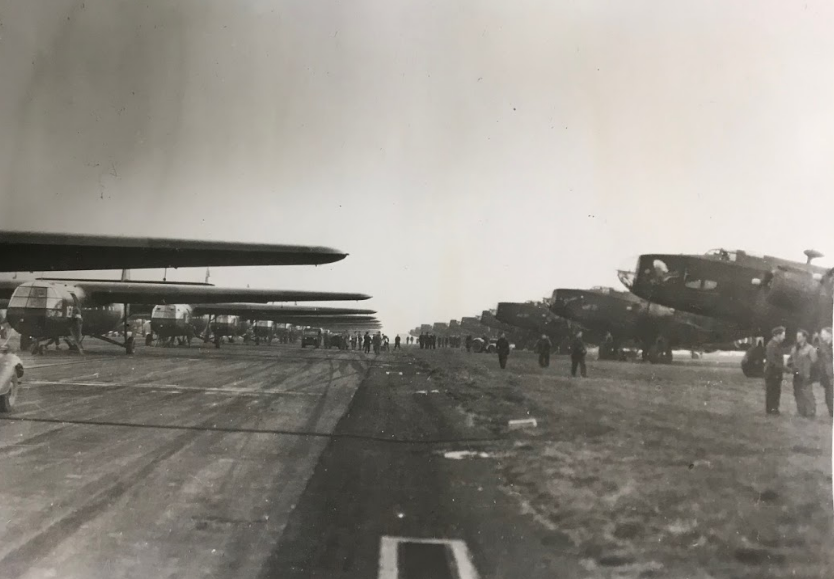
On the morning of the operation, Earls Colne was visited again by Air Vice Marshall Tedder, the Secretary of State for the Air, Sir Archibald Sinclair and 38 Group ACC Air Vice Marshall Scarlett-Streatfield. They witnessed the first Halifaxes taking to the air around 07:00 with Wing Commander Musgrave leading 296 Squadron (Chalk # 153) and Wing Commander Dean at the head of 297 Squadron. Each squadron managed to launch 30 tug/ glider combinations within 30 minutes, the Horsas carrying 6th Airborne Division troops as well as three anti-tank batteries of the Royal Artillery, 53rd Air Landing Light Regiment RA and 195th Air Landing Field Ambulance (20). The two Earls Colne squadrons headed for Landing Zone ‘P’ between Wesel and Rees near the town of Hammerkiln, territory already well-known to some of the Earls Colne pilots. All aircraft successfully reached the target point and released their gliders although an allied smoke barrage made it hard to see the subsequent landing of 6th Airborne.
(20) One 296 Squadron Halifax had a problem and the tug and glider Chalk # 154 had to re-marshall at the back of the formation. It is likely that Chalk #153 flown by Capt. John Frederick Hubble was the first glider in the air behind W/ Cdr Musgrave’s Halifax and that Chalk # 155 carried 6th Airlanding Commander Brigadier R.Hugh Bellamy. Information from Lindsay Aspin, Glider Pilot Regiment Society on WW2talk.com.
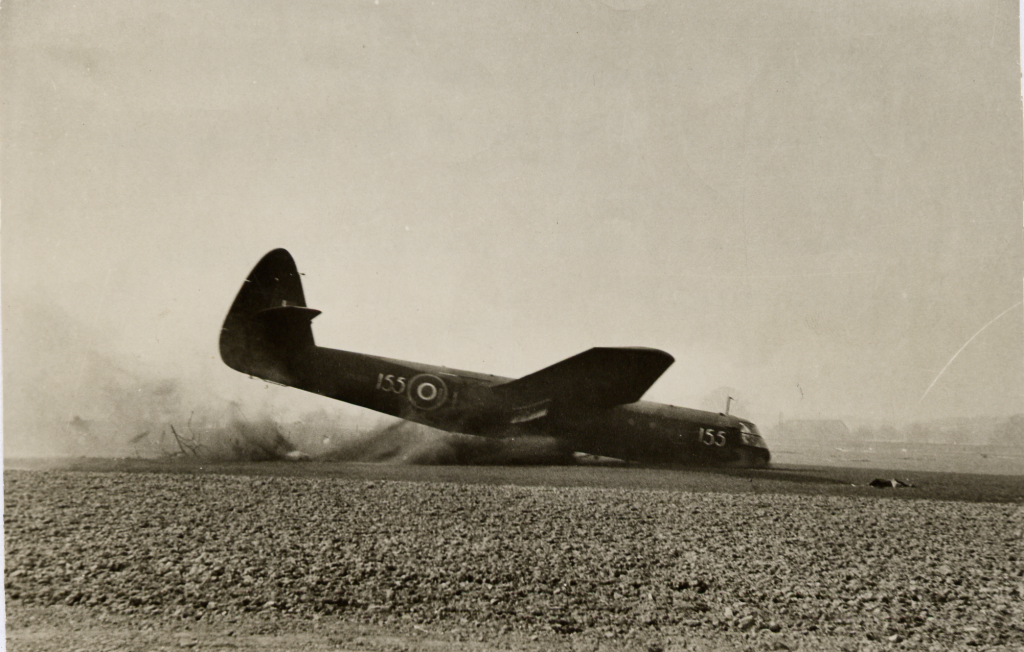
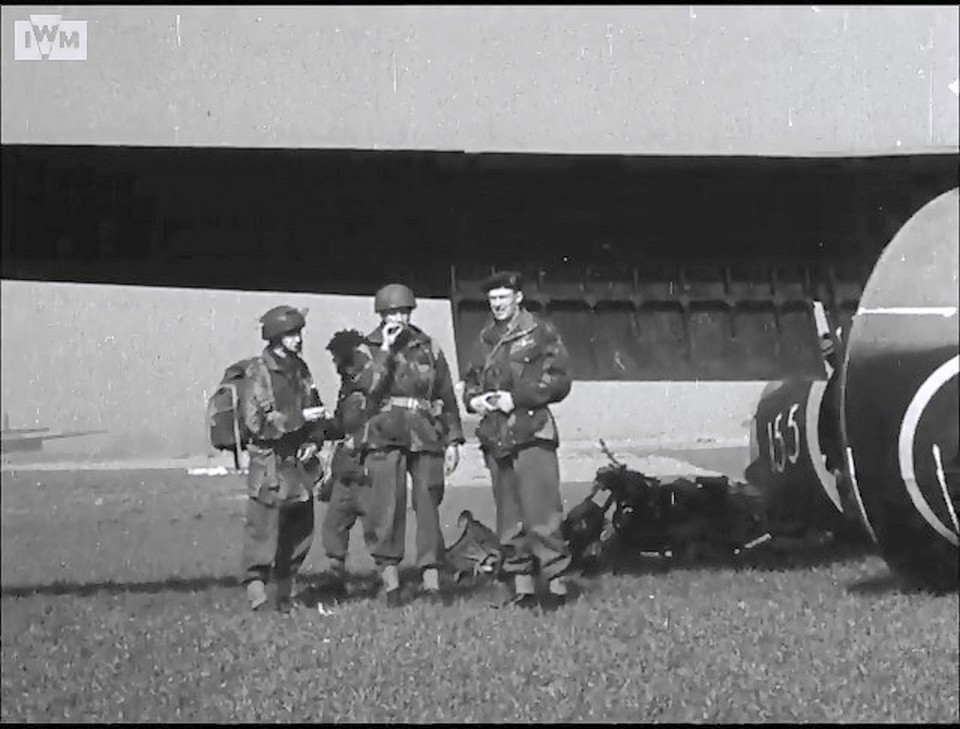
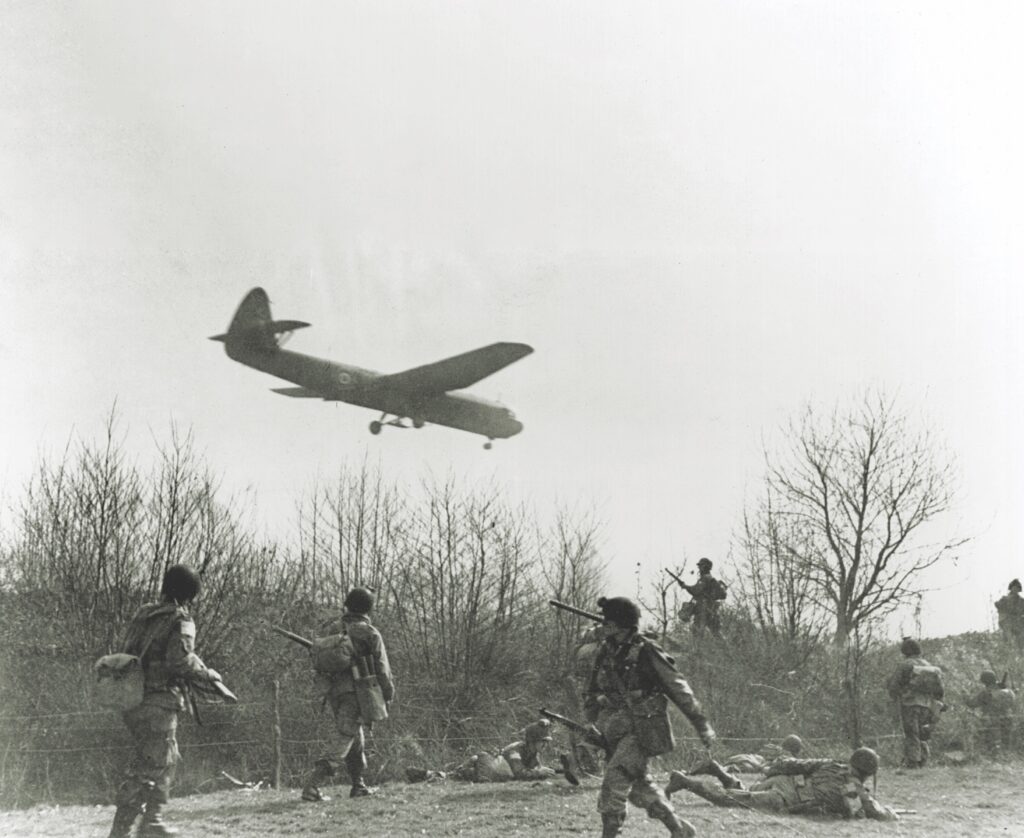
All 297 Squadron aircraft successfully regained Britain, touching-down between 12:15 and 13:30. Three aircraft landed at Gosfield with undercarriage issues and one Halifax. experiencing brake problems, touched-down at Woodbridge’s 9000′ strip. 296 Squadron were home earlier, landing between 11:57 and 12:36, but had suffered two losses. Flt.Lt Priest’s Halifax NA131 was towing a Horsa carrying the 195 Field Ambulance medics and equipment and had successfully released the glider when the aircraft was hit by heavy anti-aircraft fire. Two crew survived the subsequent crash, navigator Warrant Officer M.Allen and wireless operator Warrant Officer K.Rogers. The flight engineer, Flt. Sgt Robert Armstrong, was reportedly thrown clear of the Halifax but at too low a height for parachute deployment. He died along with Pilot Harold Priest, Flt.Sgt George Holmes and Flt.Sgt.Richard Brothwood.
The other casualty was the Halifax of Australian Flying Officer Ron Lamshed who was piloting NA698 and had to make an emergency landing in France at Advanced Landing Ground B53, Merville. Lamshed’s Halifax was carrying an unauthorised seventh crew member, Intelligence Officer Rosemary Britten, who was the only woman to take part in Varsity, the biggest airborne operation of all time. Rosemary had been invited by her uncle, Major T.Ian Toler DFC, the Officer Commanding ‘B’ Squadron, #1 Wing of the Glider Pilot Regiment (21), to ‘see off’ the Halifaxes and Horsas from Earls Colne on the morning of 24th March. However, she had more ambitious ideas and had to keep a low profile away from her uncle until she was able to board Halifax ‘D for Dog’ . Wearing her flying suit, ‘Mae West’ and parachute, she boarded the aircraft and they took off en route for Germany. Despite the damage to the bomber, the landing at Merville was successful and the crew managed to return to Britain the same day. Amazingly, the secret of her flight was maintained for many years; Rosemary went on to marry the well-known East Anglian artist Cavendish Morton and, as a gifted musician, she went on to teach piano in two Suffolk schools. She returned to the Britten family home of the Isle of Wight in 1997 having developed MS and died in 2001.
(21) Major Ian Toler was based at Earls Colne for the run-up to the Rhine Crossing. He had taken part in the Market Garden operation on 17th September 1944 flying Horsa RN558. The glider had been towed by 297 Squadron’s Albemarle V V1772 piloted by Wing Commander Grice from Manston. Major Toler’s glider landed successfully and he fought alongside the 1st Parachute Brigade around Arnhem, evaded capture and made it back to the UK in time for the next big airborne operation.


As with the Dakotas of 46 Group, 25 296 Squadron Halifaxes and 20 297 Squadron aircraft were placed on standby for a re-supply mission. However, the 6th Airborne had successfully taken their objectives and no further flights were needed until 26th March when three 296 Squadron aircraft dropped containers at the Landing Zone. They repeated the operation with four Halifaxes the following day.
Business resumed as normal on March 30th with one 296 Squadron aircraft heading to Norway on an SOE mission and four heading to Denmark. As if the navigation demands of these operations weren’t enough, four aircraft were sent to photograph ‘a small rock 250 miles west of the coast of Scotland’. It is not recorded in the Operational Records whether they found Rockall or not -perhaps it had sunk beneath the waves as befits its mythical status.
With Earls Colne’s stock of gliders depleted by Operation Varsity, new stock was tugged-in from Fairford on 30th and 31st March to enable the continuation of glider training. Nonetheless five gliders were dispersed to Keevil on April 2nd and four of the redundant Halifax Vs were exported to Hooton Park. SOE flights continued with six 296 Squadron and four 297 Squadron aircraft sent to Norway. Heavy cloud cover meant that most of aircraft were unable to drop their payloads. 297 Squadron also sent one Halifax to Denmark and, interestingly, dropped two SOE agents over Germany.
Despite the success of Varsity heralding the end of the war in Europe, Japan was not expected to capitulate immediately and it was considered likely that glider operations might be needed in the Far East with South East Asia Command. Consequently, 38 and 46 Group Dakotas and Halifaxes continued training throughout April. 296 Squadron made 36 lifts on April 4th for local towing, ten aircraft were on circuits and VHF approaches on April 5th, fifty tug/ glider lifts were made on 6th and forty-one on 7th April. 297 Squadron also fielded aircraft for towing practice but on a lesser scale.
The two squadrons also continued with their support of the airborne forces. Despite the crossing of the Rhine, the German army continued to control large parts of the Netherlands and a plan was devised to drop French SAS troops behind the enemy lines to sow the kind of confusion the SAS specialised in. Operation Amherst was planned for 6th/ 7th April and the French troops assembled at Wethersfield’s ‘Mushroom Farm’ camp (22). There was a 24-hour delay before forty-seven 38 Group Stirlings from Rivenhall, Shepherds Grove and Great Dunmow took 702 SAS troops to Holland on the night of 6th/ 7th April. Eighteen Halifaxes were standing-by at Earls Colne to drop support Jeeps to the SAS but their departure was cancelled owing to the weather. The Stirlings had to be guided to their targets using ‘Gee’ radio navigation but, owing to the poor geometry of the base stations, the drops were less accurate than expected and the French troops often landed many kilometres from the target. Also, the cancellation of the Earls Colne Jeep mission wasn’t fully disseminated and some groups continued to expect the vehicle drop. Eventually, on April 9th, four aircraft from 296 Squadron and six from 297 Squadron took the jeeps to the B77/ Gilze-Rijen airfield in allied-occupied Holland and they were driven to the SAS Tactical Special Forces HQ at Coevorden on the front line. From here, French and Belgian SAS in groups of 2-3 Jeeps, infiltrated the German lines. The French SAS had been effective in sowing confusion and destroying selected targets but the Germans had been more resolute than expected. By the time the Jeeps were able to extract the remaining troops, thirty-three paratroops had been killed-in-action. The German army murdered three captured paratroops and fifty Dutch civilians in reprisals.
(22) Information from www.ww2talk.com.
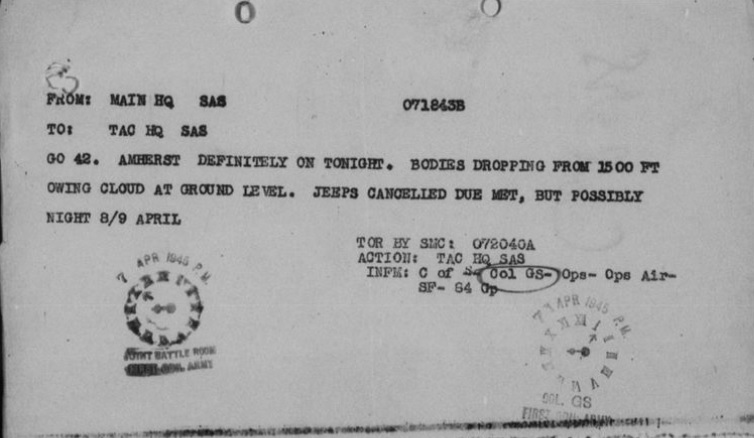
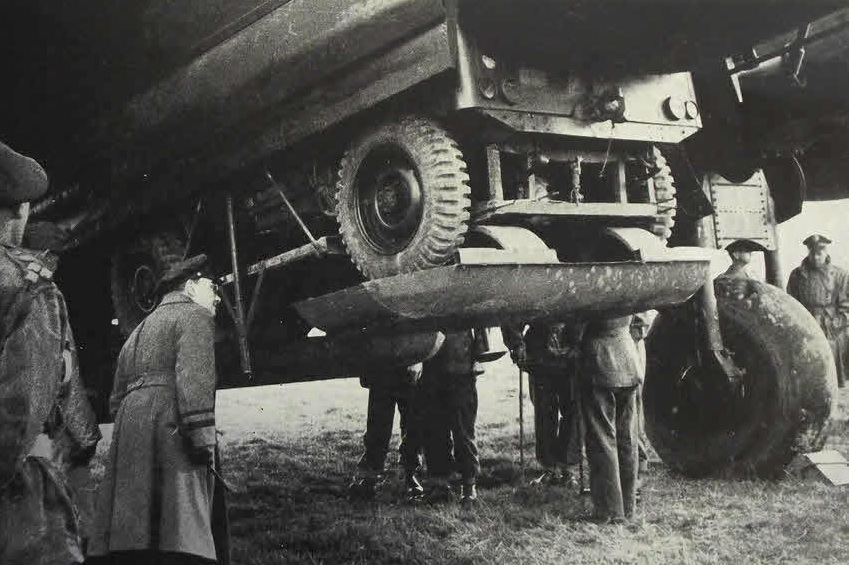
Squadron Leader Hobbs had returned to Earls Colne following his Halifax crash near Lille but, once again, had poor luck on NA309, he crashed on take-off from the Dutch airfield. The SOE flights continued: 296 fielded three Halifaxes on April 10th and 297 Sqdn two aircraft on sorties which may have been in support of the SAS Operation Amherst. But the weather remained poor and 296’s SOE supply flight on April 11th was recalled. The same happened the following night, although 297 managed to get three aircraft through.
Earls Colne will have resounded to Halifaxes on glider-towing exercises during mid- April 1945: 296 Squadron made 48 lifts on 10th, 38 on 12th, 10 on 13th and 15 on 14th. There was a further mass lift on 20th and, in-between, crews brushed-up on their bomb-aiming skills at the Orfordness Range on 16th and 18th April. SOE operations continued with eleven 296 aircraft allocated to them on 14th April, fourteen on 18th April, eight on 20th, another fourteen on 23rd and four on April 25th. Most targets were in Holland and Norway although those on 20th April featured Denmark, still a couple of weeks short of liberation. In the same period, 297 sent ten aircraft to Norway on 19th, eight on 20th, eleven on 22nd and six on 25th. In between, five 297 Halifaxes went on SOE missions to Holland where they found drop locations around Linden to be flooded. Light flak was still reported over the Netherlands ( a truce was implemented on April 29th to permit food drops to the starving population of Holland) and, more surprisingly, from Sweden as the Halifaxes dropped supplies to Norwegian groups.
May arrived with a spell of bad weather across East Anglia which interfered with Exercise Amber, a glider and re-supply exercise in which the two squadrons were due to participate. After postponement on May 1st and 2nd, it was decided to try the take-off and formation late morning on May 3rd. The subsequent release of gliders over Earls Colne was followed by turbulent approaches to the airfield and damage to several gliders which overshot on landing.
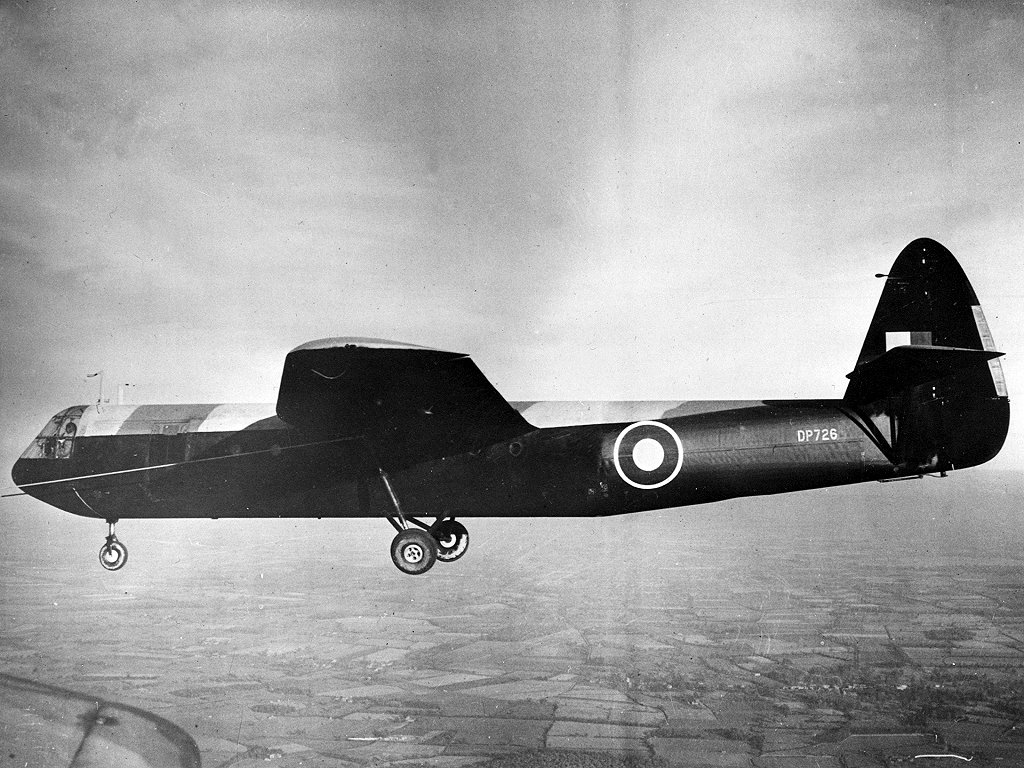
Denmark was liberated on May 4th, Norway on 7th/ 8th May, which meant that 296 and 297 squadrons were to see even more of Scandinavia in the next couple of months. Five 296 and four 297 aircraft delivered Jeeps to the British occupying forces in Copenhagen on 7th May. The two squadrons recorded the events of the next day, VE Day, differently- 296’s Daily Log records ‘no flying owing to the weather’ while 297 provides more detail : a one-day stand-down meant that ‘most of the Squadron dispersed to neighbouring villages in the evening where the occasion was celebrated in appropriate fashion’. No doubt many remained ‘under the weather’ when, with the 48-hour celebration cut short, four aircraft from each squadron flew jeeps and troops of the 1st Airborne to Gardemoen, Norway. Six 296 Squadron Halifaxes took part in troop/ Jeep deliveries to Oslo-Gardemoen on 10th/ 11th May while 297 Squadron dispatched eighteen aircraft to Oslo on the second day. As an indication of the decreasing serviceability of the Halifaxes, seven of 297’s eighteen aircraft remained on the ground at Gardemoen with minor issues (some were boxed-in behind other aircraft with mechanical problems) and an eighth, NA639, suffered undercarriage damage when it taxiied into soft sand. Another twelve 297 Squadron Halifaxes headed for Oslo on May 12th along with fourteen 296 aircraft – including NA308 piloted by Wing Commander Musgrave who was to remain at Gardemoen for six days as the airfield’s Commanding Officer. He had several issues to resolve, as the Norwegian airfield had food supply, billeting and marshaling issues which meant that the Earls Colne Halifaxes usually aimed to depart for Britain as quickly as possible via a stopover at Peterhead. And if Peterhead represented a better option, Oslo had problems! 296 Squadron delivered Eureka sets to Oslo on 13th, along with troops and jeeps, presumably to upgrade the approach navigation.
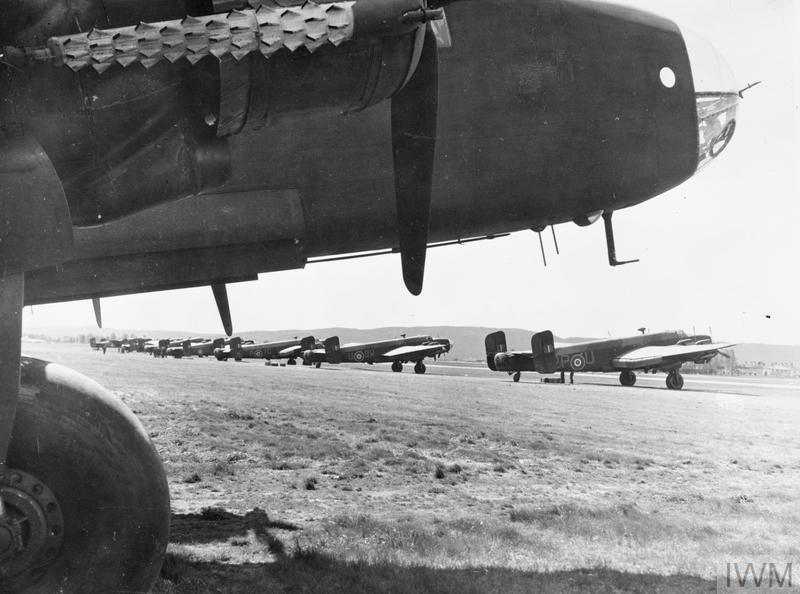
There was a break in missions to Scandinavia on May 14th when four 297 and five 296 Halifaxes took part in an unsuccessful air sea rescue search off Denmark. Flights to Oslo returned for 296 Squadron on May 15th, 18th, 19th and 20th while 297 Squadron sent three Halifaxes to Stavanger on 15th. Five aircraft were also seconded by 297 Squadron to East Fortune, to the east of Edinburgh to fly ADLS (believed to be Air Despatch Letter Service). One of the detached Halifaxes returned to Earls Colne for a visit on 23rd May an, landing on runway 07/ 25 in a heavy shower, skidded and hit a transformer leading to heavy damage. 296 flew glider training missions on 17th and 24th May and, on May 25th, suffered a more serious accident. Halifax NA291 was returning from a passenger flight to Keevil when it crashed killing pilot Flt.Lt Fraser, Flt Sgt Ross, Sgt Tait and passenger Lieutenant Moore.
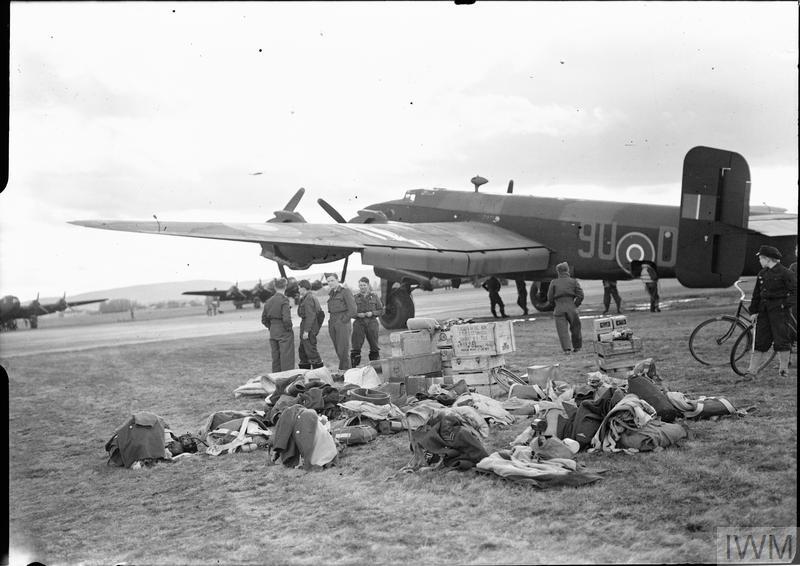
Between May 27th and the end of the month, both squadrons began operating a new kind of flight. Outbound flights to B58/ Brussels Melsbroek carried troops while the return sectors carried released ex-POWs to RAF Oakley. Eighteen 296 and twelve 297 Squadron Halifaxes flew this route on May 27th and both squadrons repeated the service on 28th, 29th and 31st May. The flights ran on into June with 296 despatching between five and nine aircraft taking British and Canadian troops to Melsbroek and returning to Dunsfold with ex-POWs. 297 fielded four or five aircraft per day over the same period with the Melsbroek flights returning to Blackbushe or Dunsfold. The project to return ex-POWs, Operation Exodus, had been in full flight since April and the two Earls Colne squadrons were quite late coming to the party.
June 1st saw 296 Squadron aircraft in action dumping redundant ammunition in the North Sea (23) and, on June 8th, six aircraft took part in a cross-country gliding exercise. Otherwise, it was largely troop movements which kept the Earls Colne aircraft busy: 296 sent nine aircraft to Melsbroek on 9th and 10th, the return flights carrying troops. 297 provided four to six aircraft for the Brussels flights on 9th, 10th, 12th and ten on 14th June.
The East Fortune detachment returned to Earls Colne on June 13th but 297 Squadron missions continued to be orientated towards Scandinavia. They sent ten Halifaxes to Oslo on June 16th with a contingent of troops. A projected mission to Trondheim on June 18th was postponed until 21st owing to adverse weather conditions. Eight of the ten scheduled aircraft finally made the trip with one going ‘technical’ en route and one upon arrival in Norway. The aircraft refuelled at Peterhead on the journey. The Commonwealth crews began to depart the two squadrons in June, prior to returning home. 296 Squadron records that their Australian crew members stood-down on June 10th and 297 noted that the Canadian crew departed on June 25th. Their contribution to the RAF had been enormous and many of those who traveled to support the Allies never got to return home again. Troop and ex-POW movements continued with 296 ferrying Canadian troops to Blackbushe via Brussels on 12th and 13th June, returning to Earls Colne with Belgian soldiers (possibly SAS?). On June 15th 158 New Zealand and British ex-POWs were transferred from the Continent to Dunsfold by four Halifaxes.
(23) European Union mapping shows that conventional ordnance was dumped around ten miles offshore Clacton.
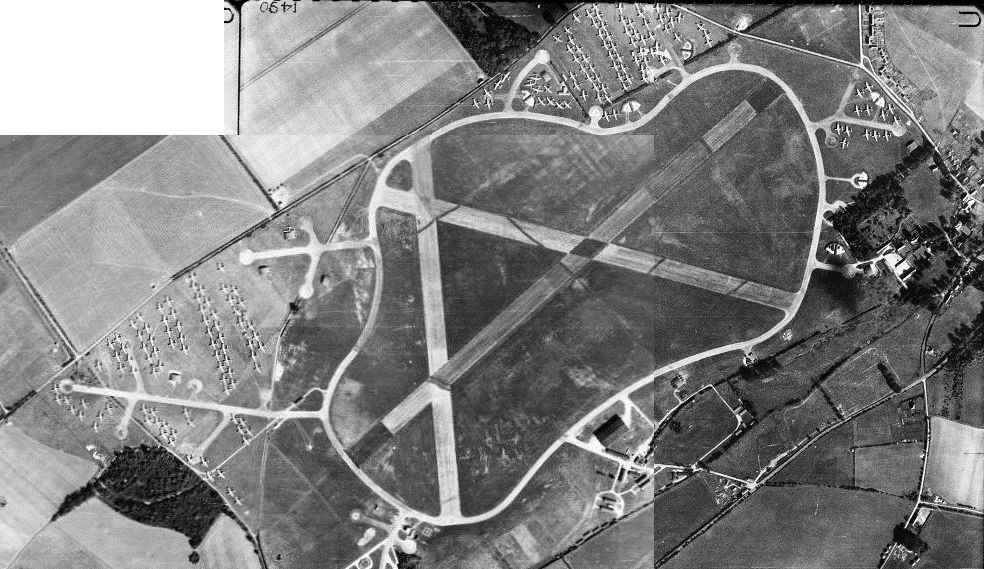
Five 296 Squadron aircraft took 6th Airborne troops to Oslo Gardemoen on June 16th while eight Halifaxes continued with glider-tow training around Earls Colne and ten bombers headed for the practice range at East Hartley, Cambridgeshire. Three days later, ten 296 Halifaxes towed Horsa gliders to Thruxton, Hampshire, an airfield which had been home to 297 Squadron during 1942/ 43. The gliders were being gathered for scrapping in ‘Operation Residue’ and, on June 30th, 297 themselves would deliver eleven redundant Horsas to Thruxton. 296 also towed gliders to Thruxton on 30th and, despite the 9/10 cloud cover, a simulated fighter attack exercise was carried-out prior to the release of the Horsas over Thruxton.
Eight 296 Squadron aircraft departed Earls Colne on June 21st to deliver 108 RAF Regiment personnel to Trondheim. On June 22nd , 296’s Commanding Officer, Wing Commander Musgrove, flew a Halifax from Earls Colne to Aalborg, Denmark, along with Squadron Leader Jackson in a second aircraft, NA304. They were guests of the Danish Resistance and, during the following few days, S/Ldr Jackson demonstrated parachute drops at Copenhagen, taking part in the Kastrup Air Pageant on the last day of June. Otherwise, the month ended with some further glider transfers (296 Squadron moved Horsas from Gosfield to Earls Colne on 26th), firing and bombing practice plus air experience flights for the local Colne Valley Air Training Corps squadron.
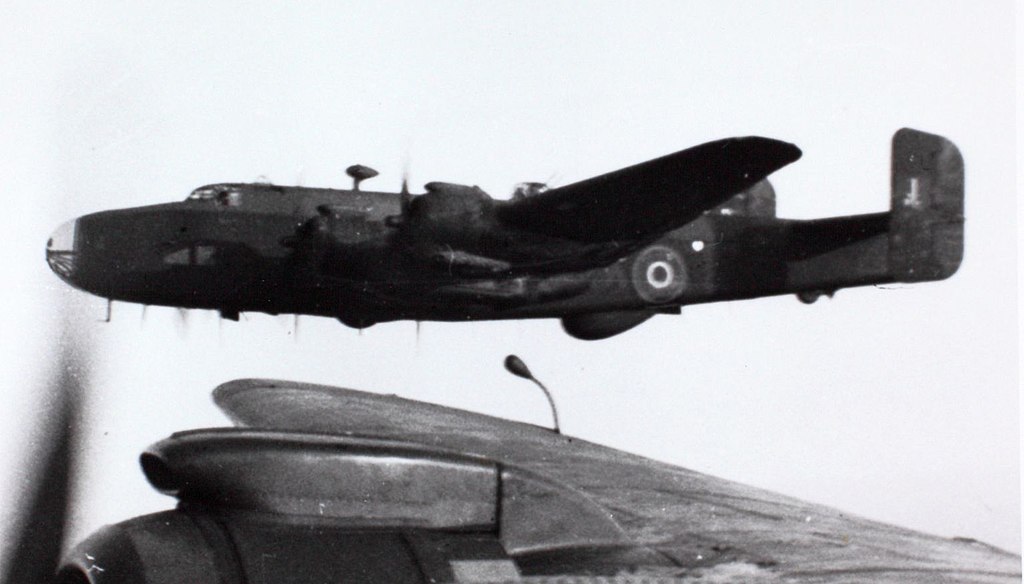
July 1945 continued in much the same vein: 296 Squadron fielded six Halifaxes for a freight flight to Copenhagen on July 2nd and 297 accompanied them with five freighters. The operation was repeated the next day with four 296 and six 297 squadron aircraft. In both cases, the Earls Colne aircraft routed to denmark vis B58/ Brussels Melsbroek. 296 Squadron’s Squadron Leader Hobbs took part in a third freight mission to Copenhagen on July 4th, leading five aircraft which staged via B58/ Melsbroek on both outward and return journeys. On the Kastrup to Brussels sector, the aircraft carried french troops. 297 fielded five crews for the same operation but were held-over at B58 while outward bound owing to fog. July 4th was also the day that the Australian crews which had flown from Earls Colne departed Essex on their way home.
9th July saw two 296 Squadron aircraft, NA641 and LW446, accompanying two 297 Squadron Halifaxes on a flight to East Fortune, near Edinburgh. Fuel was taken on board and the four bombers departed for Oslo. 297 Squadron mounted another operation on July 17th when four Halifaxes delivered 58 soldiers to the Norwegian capital before returning with 46 Norwegian merchant seamen. The previous day, July 16th, 296 had sent one aircraft to Copenhagen to collect military prisoners who were returned with a military escort to Blackbushe the following day.
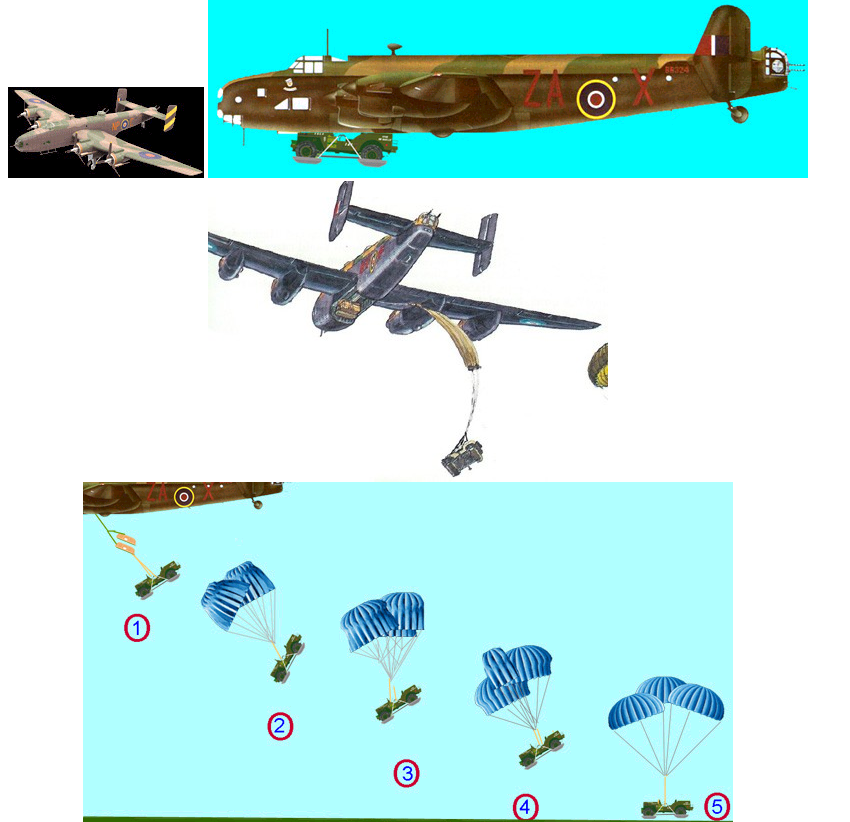
Glider exercises were maintained during the, supposedly, good summer weather and, on July 5th, a demonstration Jeep parachute drop was carried out at Earls Colne for the benefit of the French Press. 297 Squadron reported that the drop had gone to plan. While six 297 Squadron crews had been involved in glider-towing exercises on July 8th, a mass glider operation planned for July 10th didn’t take place owing to poor weather. After three days postponement, Operation Angus took to the skies on 13th July with a large number of 296 and 297 Squadron aircraft towing Horsa gliders aloft. After manoeuvres, the gliders were cast-off to land at nearby Rivenhall airfield. The gliders were recovered to Earls Cole airfield the same evening – an operation which took 45 minutes flying to move the Horsas seven miles back to Earls Colne. Glider towing was again on the schedule for July 14th when six 297 crews took to the air. The weather again proved capricious and the runways in use had to be changed several times as the wind direction varied. Six 296 Squadron Halifaxes repeated the exercise the following day, July 15th, and 297 undertook night towing and landing exercises on 18th July. The next day, three 297 aircraft flew to Fairford while another three took part in local glider towing which culminated in the Horsas being released over Gosfield airfield. One 297 Halifax flew around Earls Colne in concentric circles in order to calibrate the airfield’s Goniometer Direction Finding equipment.
The repatriation of those displaced by the War was started in late July with the two squadrons each taking Czech citizens home to Prague on July 20th. The reception committee in Czechoslovakia was reportedly very warm, but the Earls Colne airmen were unable to fully appreciate it as they had to fly home ! 297 sent a further aircraft to Prague on 21st with diplomatic baggage and both squadrons sent seven aircraft to Czechoslovakia on July 23rd with Czech soldiers. Three 297 Squadron aircraft and five from 296 took civilians to Prague on 24th July and 296 brought several Czech army officers back to Earls Colne. The last overseas transport flights in July took place on 28th with 297 Squadron sending three Halifaxes to Prague with passengers and medical supplies. 296 sent NA295 along with mail and more medical goods. On the same day, 296 sent two aircraft, NA614 and NA308, from Earls Colne to Copenhagen and one to Eindhoven with Red Cross parcels.
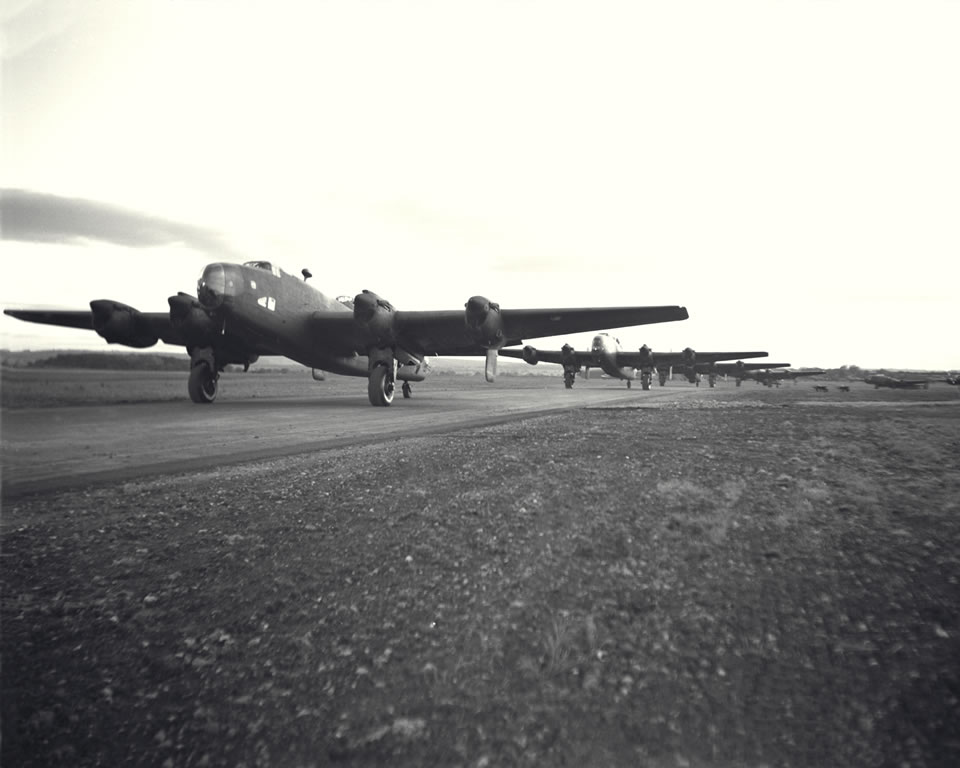
Cross-country exercises returned on July 25th with 296 fielding nine aircraft for evening glider towing. The gliders were released over Earls Colne before the bombers proceeded with cross-country training flights. 297 didn’t take part but did provide four Halifaxes for formation cross-country flying the next day. Further mass glider exercises followed on 27th and 30th with 296 providing nine aircraft on each occasion. 297 also joined-in on July 27th when two aircraft suffered engine issues: one led to the tug releasing its glider over Earls Colne and the other problem occurred during the cross-country flying. The 297 Squadron Commander was flying apart from the main formation but parallel to the bombers. When the formation made a 90 degree turn, one Halifax suffered an aileron issue and just flew straight ahead, narrowly missing his Squadron Commander. The sick Halifax proceeded to Farnborough airfield where its glider was safely released before a successful, if tricky, landing. Further cross-country flying continued on 29th and 30th.
At the start of August 1945, 297 Squadron had eighteen serviceable and eight unserviceable Halifaxes. There were various glider delivery jobs at the start of the month and, on August 3rd, continental missions returned with two aircraft heading for Schleswig, three to Brussels and one to Prague. 296 Squadron also sent seven aircraft to Prague with medicine and freight on August 3rd and also despatched two Halifaxes to Schleswig. Also on 3rd August, 296 flew glider and bombing practice and carried a number of passengers to Blackpool. With the end of the War, the two Earls Colne squadrons were able to enjoy the August 4th Bank Holiday before returning to continental flying on 5th. Between them, the squadrons operated five aircraft to Copenhagen carrying fighter from and to Warmwell and refuelling at Brussels. There were thunderstorms over the North Sea and the Earls Colne flare path lights failed as the three 296 Squadron aircraft were landing; one successfully landed but the other two had to divert to Great Dunmow. Miscellaneous operations continued for the next week: air tests, glidr towing, demonstrations plus a ten-aircraft mission to Twente in Holland.
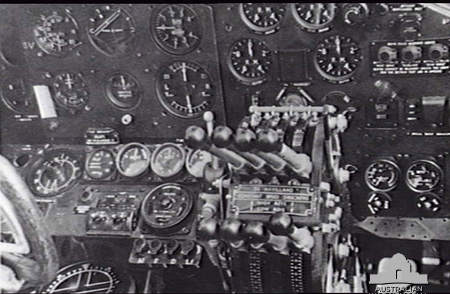
On August 11th 1945, the two squadrons mobilised detachments to fly to Hassani in Greece in preparation for Operation Hellas. The following day, the squadrons sent seven aircraft each to B58/ Brussels Melsbroek to collect Greek Displaced Persons for transport to Hassani. This Athens airfield had been opened for US and British military operations the previous month as the vicious Greek Civil War continued. Further flights continued from Brussels to Hassani on August 13th with refueling provided at Foggia. The runways at the Italian airfield were very rough and led to some hydraulic difficulties. Some of the Earls Colne aircraft returned from Greece on August 15th via Foggia and St.Mawgan in Cornwall. On the same day, both 296 and 297 sent aircraft from Earls Colne to Lubeck with ATS personnel and other passengers. They were to discover that all ground crew at the German airfield were away on 48 hour VJ passes.
The Greek operations continued to the end of the month with Hellas 2 launched on August 22nd. Seven Halifaxes from each squadron traveled from Earls Colne to Brussels to Hassani. The aircraft were back in Essex by 25th August in time for the Hellas 3 operation on August 28th. Seven 297 Squadron aircraft headed back to Earls Colne via Foggia and St.Mawgan on August 31st and the 296 Squadron Halifaxes followed on September 1st.
296 Squadron paraded in its entirety on 27th August for the presentation of the Squadron crest. The heraldry included a red sword in honour of the assistance provided to the Airborne services, a scroll representing their earlier nickelling operations and the motto ‘Prepared for all things’.
Glider towing exercises continued during September with 297 squadron providing three aircraft for local towing. However, the Squadron only had access to fifteen serviceable aircraft with a full eleven unserviceable. By September 4th they were unable to carry-out any operations as all Halifaxes were deemed to be u/s. 296 Squadron joined glider-towing practice on 2nd and 3rd September and provided nine Halifaxes to tow gliders to Shepherds Grove airfield on september 6th. Following release of the gliders over Shepherds Grove, the Halifaxes collected the gliders the same evening and returned to Earls Colne. This exercise was called Operation Comeback and 297 Squadron were able to field eighteen aircraft to tow gliders and were able to get airborne in a commendable fifteen minutes.
The Halifax squadrons provided seven aircraft each for Operation Hellas on September 5th and 6th with flights continuing to collect Greek personnel from Brussels for transport to Hassani. Five of the 297 Squadron aircraft returned to base on September 8th via an intermediate stop at Grafton Underwood to drop-off British troops. By September 9th, 297 Squadron continued to report high unserviceability with sixteen of their twenty-four Halifaxes out of action.
The two squadrons were able to provide aircraft for the Battle of Britain display purposes on September 14th. Flt.Lt Frere towed a Horsa glider all the way north to Wick and other aircraft were dispatched to Ringway, Accrington and Church Fenton. The Wick display also featured a demonstration container drop on September 15th – unfortunately, the Halifax later ‘went technical’ and the crew had to make the long journey home to Essex by train. 296 Squadron also did their part, sending a glider/ Halifax combo to each of Hemswell, Scampton and Leeming. By September 16th, the 297 Squadron mechanics had managed to get 23 Halifaxes to full serviceability which enabled them to field seven aircraft/ glider combinations on a mass lift exercise on September 19th. This was followed two days later by Operation Womund when seven Halifaxes released their gliders over Great Dunmow airfield.
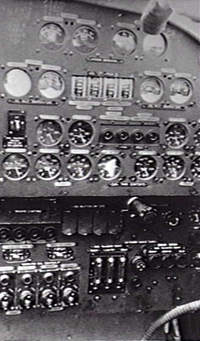
Overseas operations continued for the Earls Colne squadrons with each dispatching a single Halifax to Cairo on September 18th. 296 Squadron’s Flt.Lt Kenyon took ten 6th Airborne troops on the run to Egypt. 297’s Halifax NA293 was routed via Istres and Malta but suffered problems at the French airfield. The following day, a 296 Sqdn Halifax took spares and jacking panels to Marseille-Istres to assist the unserviceable 297 Halifax before continuing eastwards to Castel Benito and Lydda. 297 Squadron also sent a Halifax of their own, NA635, to Lydda, via Castel Benito, with fifteen troops on board. The two Lydda aircraft continued to Cairo, arriving on September 23rd.
European flights included Prague on 21st with 297 dispatching one aircraft directly and six routed via Colerne. 296 Squadron also sent eight Halifaxes to Prague via Colerne where they collected a shipment of Czechoslovakian currency. Both squadrons mounted operations to Lubeck on 23rd September with 296 supplying five aircraft and 297 sending eight. Despite poor weather in Essex, 296 managed to get one aircraft away to Lydda on 24th September with a 12-strong contingent of the 6th Airborne on board. Both squadrons dispatched seven aircraft to Gilze-Rijen on 26th with the return flight routed via Broadwell. Both flights carried army personnel and a government film unit dedicated to making a film commemorating the Arnhem operation. The mission was dubbed ‘Operation Filmstar’. Two 297 Squadron aircraft headed for Marseille Istres on 27th September and one on 29th. 296 sent an aircraft to Prague on 29th September to pick-up a Halifax which had been unserviceable since 21st.
At the start of October, SAS officers and members of 296 Squadron flew from Earls Colne to Toulouse as guests of the Maquis (French Resistance) of Southern France and the Pyrenees. Glider tow training and air experience flying continued from Earls Colne with both squadrons taking part in the oddly-named ‘Doofah’ glider towing exercise on October 3rd. 297 logs recall that their eleven aircraft take-off had been indifferent but that the glider ground concentration at the Earls Colne landing ground had ended-up being very good. October 6th saw three 296 Squadron aircraft allocated to demonstrate glider towing to local Air Raid Precaution members. Unfortunately, one glider suffered problems on take-off and crashed, injuring two of the guests. Despite the incidental problems, changes were afoot at Earls Colne and the two Halifax squadrons were due to be attached to Transport Command. All aircrew were recalled from leave on October 7th to attend a training course designed to prepare them for long range passenger operations to India. 296 Squadron took the opportunity to carry-out beacon tests and autopilot checks at the same time while 297 Squadron sent five Halifaxes to Shepherds Grove on October 8th to collect gliders used on recent exercises. A Mobile Operational Training Unit arrived at Earls Colne on October 10th 1945 and the next ten days were spent training for the India trunk route operations. 297 squadron had twenty Halifaxes operational, with a further eight undergoing maintenance, and it was decided that ‘A’ Flight would complete the five day training first while ‘B’ Flight maintained any regular duties. they would then swap around to complete training.

With the end of training, both squadrons got to enjoy themselves with a brief sortie to Brussels entitled ‘Operation Wellington’. On October 19th, each squadron sent five Halifaxes plus a ground crew to B58/ Brussels Melsbroek. The following day, each bomber was scheduled to drop ten Belgian SAS troops over the battlefield at Waterloo. After some technical issues, all but one Halifax managed to make the drop successfully and the crews were then entertained by the SAS in Brussels, returning home on 22nd. Bad weather was reported as the reason for the prolonged visit although ‘reveling by night’ was also noted. One Halifax from 297 Squadron continued from Brussels to Berlin Gatow with SAS troops who were able to vie the damage done by the allied air forces. The two squadrons also sent aircraft to Warsaw with items for an RAF exhibition in another devastated city. 296 Squadron’s MA965 flew to Berlin on October 22nd and then had to wait for Russian permission to fly on to Poland – an ominous portent of the future. Meanwhile, 297 had sent a Halifax to Blackbushe on 22nd to collect personnel or equipment for transport to Warsaw. Staging to Berlin Gatow on 23rd and onwards to Warsaw on 24th, the Halifax only returned to Earls Colne on 26th October. The timing meant that they had missed a period of very high winds over Essex which had made the cross-country glider exercise on 23rd October rather turbulent. Fortunately, the participating gliders were all released successfully over Earls Colne.
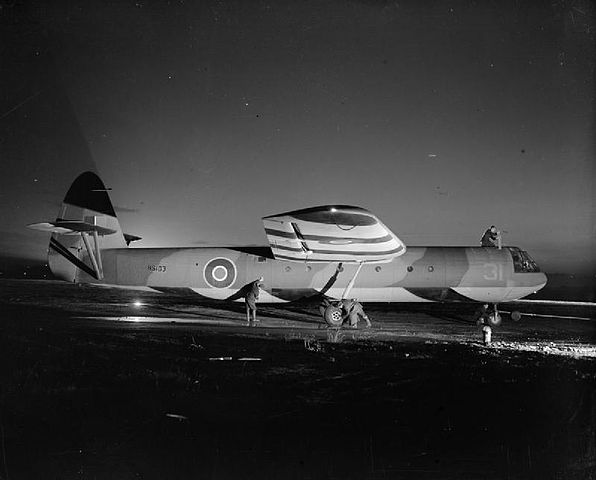
On October 25th, 296 Squadron sent their first aircraft on the trunk route to India. The Halifaxes carried ship crews and routed via Malta. At the same time, several of the Earls Colne Halifaxes were being disposed-of to the Maintenance Unit at High Ercall: the first 296 aircraft and three 297 aircraft flew there on 27th and a further 297 Halifax was delivered to them on 30th. The mail flights to India were scheduled to start on 26th October but 296 Squadron’s NA290 was held-over at Earls Colne owing to poor weather over the Mediterranean. It departed on 27th and was followed by single 297 Squadron Halifaxes on 28th and 29th of the month. Bad weather intervened again on 31st and early November featured very poor visibility at Earls Colne. 297 Squadron’s NA295 departed for Calcutta on November 3rd but only got as far as Manston before fuel pump issues intervened. Another 297 aircraft set-off on November 4th and NA132 followed on 5th while 296 Squadron obliged with Halifax departures on 6th, 7th, 8th and 14th. Back home in Essex, scheduled parachute exercises were delayed owing to the weather but Demon XIX eventually took place on 6th November, ‘Shareout IV’ on 7th and 14th November. the former saw three 297 Squadron Halifaxes head to Old Sarum to drop containers and a jeep while ‘Shareout IV’ involved four 297 Halifaxes and three 296 aircraft dropping multiple sticks of parachutists over Great Sampford airfield. Single 297 Squadron Halifaxes departed Earls Colne for India every day between 8th and 11th and also on 15th November. Both squadrons flew on another episode of ‘Shareout’ on November 14th and, on 17th, 297 flew a mission dropping redundant ammunition into the North Sea. 297 also dispatched two Halifaxes on the India run on 17th, 23rd and 28th and took part in navigational training with BABS (24) and GEE equipment on 19th and 25th November.
(24) BABS was the acronym for Blind Approach Beacon System which allowed aircraft to land in inclement weather. GEE was a hyperbolic radio navigation device which had been used to direct bombing raids across Europe and was now being repurposed for peacetime operations.
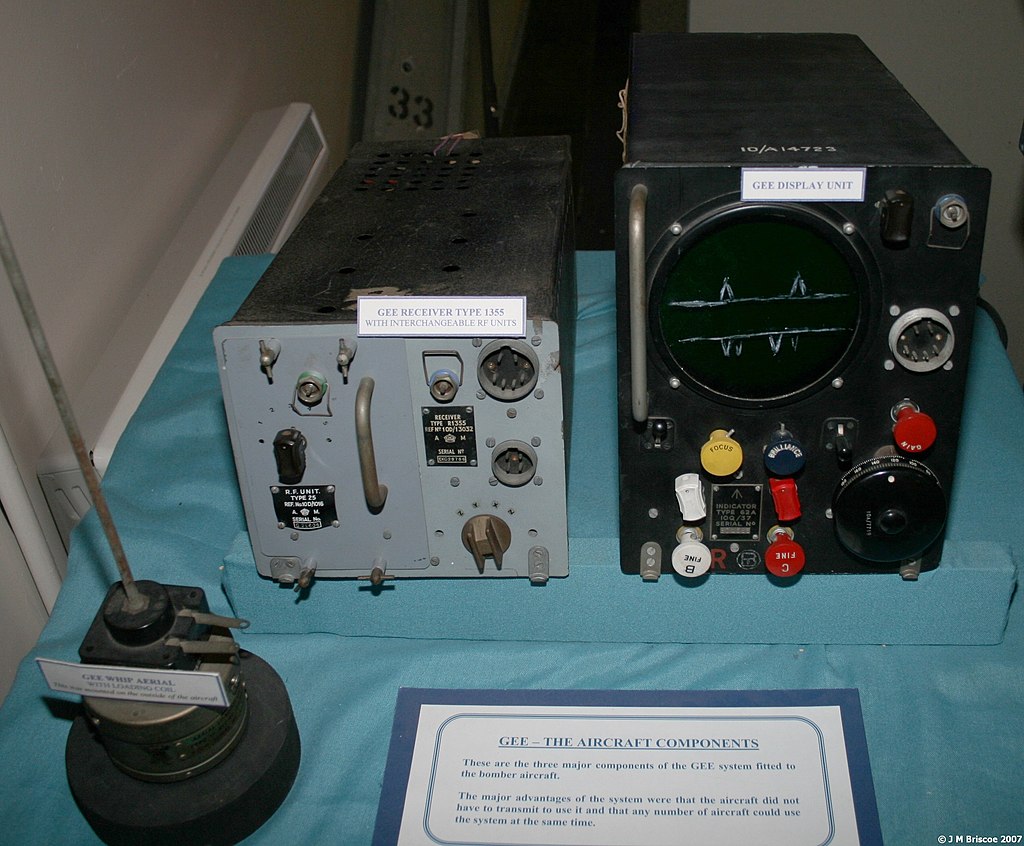
Meanwhile, serviceability problems on the India trunk route stimulated additional training at 296 Squadron. On November 18th, one of the Calcutta-bound Halifaxes had to make a 3-engine landing at Marseille-Istres and this promoted 3-engine landing practice at Earls Colne on December 1st. The engine incident wasn’t the only operational problem: Flying Officer Hinton is recorded as wrecking a Halifax at Almaya on the return flight on 19th November and, in general, the round trips were taking too long. The normal routing was from Earls Colne to Istres, Luqa in Malta, Cairo (Almaza), Shaibah in Iraq, Mauripur, Calcutta (Dum Dum) and, potentially, on to Jodhpur. Alternative stops in France might take-in Bordeaux or Marseille Marignane. The return trip could take anything between 65 to 70 hours which could lead to a shortage of aircraft back at Earls Colne. By December 1st, with the dispatch of a Halifax to India, 297 Squadron were down to three available crews so it was, perhaps, fortuitous that the weather was too poor for flying. The Squadron received an extra Halifax, a Mk VII, from Hawarden on December 3rd but this wasn’t sufficient as there had been serious maintenance issues with three aircraft on the India route. Each had experienced a loss of power on take-off which had been traced to ‘wood wool’ (shavings?) in the carburettors. Whether this was attributed to poor package/ storing or sabotage is not recorded but it led to the stripping-down and checking of all 297 Squadron Halifax carbs before the next flight to India on December 6th. In the meantime, 296 sent aircraft to India on December 3rd and 6th and, subsequently, on 13th, 17th and 22nd of the month. On December 12th, Flying Officer Saward is noted as arriving back at Earls Colne with a booty of carpets, wine and miscellaneous treasures!
The ‘Shareout’ parachute exercises continued for both squadrons in December 1945 with troop-drops over Great Sampford on december 7th and 8th. There had been a few postponements owing to weather, but, on Dec 7th, four 297 Sqdn aircraft dropped 100 members of 1st Parachute Brigade at Great Sampford and all parachutists landed successfully within the airfield limits. The operation was repeated with 56 troops on the following day.
The Top Brass of 38 Group were back at Earls Colne for a brief visit on December 9th but, despite his exhortation for ‘everyone to do their utmost’ to make the mail delivery to India a success, didn’t appear to impress 297 Squadron very much. Four crews arrived back at base from India on December 13th but 297 remained short of serviceable aircraft. On 18th, no Halifax was available for the scheduled flight to India and, the following day, only one of the two planned departures could take place. Bad weather along the route was still delaying departure on December 20th, but the Squadron managed to scrape together five aircraft for a glider tow operation from Earls Colne on the same day. Two Halifaxes finally got away on the Calcutta run on December 22nd and one of these didn’t return to the UK until January 7th when it made a 3-engine landing at Tarrant Rushton. The following day, January 8th 1946, NA424 started the India run from Great Dunmow rather than Earls Colne and returned to her home base on January 17th. In fact, NA295’s earlier touch down at Tarrant Rushton was a portent of the future and 297 Squadron was disbanded at Earls Colne during Spring 1946 and reformed at the Dorset airfield on 1st April 1946. Glider towing remained a speciality, but the long distance flights to India were terminated.
Meanwhile, 296 Squadron had welcomed-back from India three aircraft on December 30th and this was pretty much the end of the Squadron’s operational life. They were stood-down on 1st January 1946 although Gee landings, dual instruction and air tests continued from 2nd to 16th January. Some cross-country glider flying also took place, mostly as gliders were delivered from Earls Colne to RAF Sealand in Flintshire. Warrant Officer Robbins is recorded as making 296’s last operational flight on January 17th when he piloted a Halifax to Cairo and back to collect crew. Six or eight training flights took place on 18th, 19th January and 296 Squadron was disbanded on 23rd January 1946.
The 297 Squadron assigned to the ‘India Run’ included: NA295, NA132, NA635, NA638, NA129, LW446, NA113, MZ745, NA126, NA677, NA297, and NA287.
While the RAF had been at Earls Colne, the airfield had hosted Albemarles, Halifaxes, Airspeed Oxford and Anson communications aircraft as well as Horsa and Hamilcar gliders. US and RAF visitors included B-17 Fortresses and Transport Command Dakotas. Once the aircraft moved to other locations, the business of demobilisation commenced and Earls Colne airfield entered the next phase of its life.
Hits: 228
